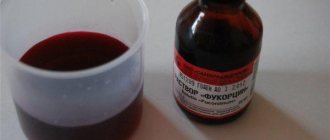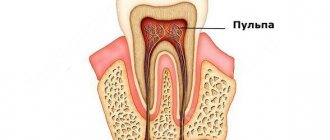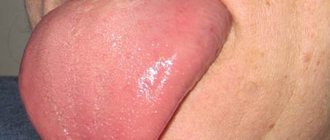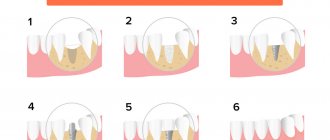A tongue burn is an injury that damages the mucous membrane, and in some cases even muscle tissue. This problem brings a lot of discomfort - from pain and the inability to eat or drink liquids to death. It is very important to urgently contact a specialist who, after studying the cause of the burn, will prescribe treatment. If you neglect the help of a qualified dentist, serious complications can occur, including necrotic decomposition of soft tissues and infection of the entire body.
Types of tongue burns
Depending on the cause of origin, the following types of injury are distinguished:
- Chemical burn of the tongue or oral cavity - when tissues are damaged as a result of exposure to aggressive chemical compounds;
- Thermal - when the surface was exposed to a high temperature object.
- Electrical - occurs as a result of tissue contact with electricity. For example, when performing dental procedures. Electric current affects not only the tissues of the tongue, but the entire body as a whole.
First aid for lip burns
The degree of burns to the lips is similar to the degree of burn damage to the tissues of the tongue and palate.
The treatment of first and second degree burns takes place outside the hospital. Treatment for third degree burns requires hospitalization.
If a woman burns her lip and tongue, the doctor will tell you what to do. But first of all, in case of a thermal burn of the lips, you need to make a compress by applying a sterile bandage moistened with cold water to them. Treat a burned tongue using the methods described above.
It should be noted that ice should not be applied to burns on the lips, so as not to provoke a worsening of the condition.
The use of ointments with vitamin B speeds up the healing process. The use of applications with chamomile decoction will help heal and relieve inflammatory processes.
Symptoms of a tongue burn
Symptoms depend on the extent of soft tissue damage:
First degree - a burn occurs due to short-term exposure to high temperature tissue. The patient experiences slight redness and swelling of the mucous membrane. Often, a burn condition is provoked by consuming too hot food or liquid.
Second degree – swelling of the mucous membrane, redness, and multiple blisters on the surface are observed.
Third degree - accompanied by tissue death, large blisters, redness of the surface, the organ itself seems to “change its consistency.” As a rule, it occurs due to exposure to gases, liquids at elevated temperatures, or chemical compounds.
The fourth degree is a severe lesion when the tissues are charred. This burn condition is rarely compatible with life.
How to properly treat a tongue burn?
Treatment methods depend on the type of thermal injury.
What to do in case of a thermal burn of the tongue?
- rinse your mouth with cool water;
- apply ice or a cold object to the damaged area;
- treat the burn site with a disinfectant solution;
- rinse with a disinfectant to prevent bacteria from entering the oral cavity;
- use local anesthetic compounds;
- while the tongue is recovering, eat liquids, fruits and vegetables rich in vitamins C and B. Avoid spicy, pickled foods, foods that can have a mechanical effect on tissue (nuts, crackers, seeds, etc.).
- rinse the mouth thoroughly;
- neutralize aggressive chemicals. Depending on the source of the burn, a specific neutralizer is used;
- After neutralization, the burning sensation should go away. For pain relief, it is worth using anesthetics and antihistamines;
- if the mucous membrane is severely burned, with damage to the structure of the tongue and muscle tissue, it is necessary to urgently go for an examination to a doctor.
If there are bubbles on the surface of the tongue, you should urgently seek help from a dentist! Under no circumstances should you open blisters yourself! You may need hospital treatment under the supervision of a doctor.
How to treat a chemical burn of the tongue?
Note! If the oral cavity is burned with an alkaline solution, it cannot be rinsed with water, since moisture promotes more active penetration into the soft tissues of the tongue.
Treatment
Pre-hospital assistance
In most cases, emergency medical measures are not required. Exceptions are neurological pathologies and cyanide poisoning. In case of poisoning due to parenteral administration of cyanide to a limb, a tourniquet should be applied. Victims are advised to administer amyl nitrite and resuscitate measures to maintain vital functions.
It is recommended that stroke patients be placed in the lateral position to prevent accidental aspiration of saliva and vomit. The likelihood of restoration of neurological functions directly depends on the time of treatment, so it is necessary to call an ambulance as quickly as possible. If signs of an aura appear in an epileptic, the possibility of accidental injury must be excluded.
Conservative therapy
For diseases of the tongue, sanitation of the oral cavity, treatment of provoking and supporting somatic diseases, a special diet, and sometimes psychotherapy are indicated. The drug therapy regimen includes anti-inflammatory, antihistamine and sedatives, B vitamins, iron supplements, and biostimulants. Rinsing with solutions of antiseptics and local anesthetics is effective.
For dry mouth, lubricate the tongue with a solution of vitamin A in rosehip oil. According to indications, immunomodulators and medications with antibacterial and antifungal effects are used. For patients with severe pain, nerve blocks are performed. The listed activities are supplemented with physiotherapeutic techniques: ultrasound therapy, SMT therapy, ultraphonophoresis, medicinal electrophoresis.
Patients with neurological pathology and complications of local anesthesia from the central nervous system are prescribed anticonvulsants, neuroprotectors, vitamin-mineral complexes, analgesics, antispasmodics, and vasoactive agents. If necessary, antibacterial therapy and detoxification are carried out. In case of poisoning, resuscitation measures are continued, neutralizing drugs and anticoagulants are used.
Surgery
For glossodynia, glossalgia and desquamative glossitis, surgical interventions are not indicated. The tactics of surgical treatment of patients with tongue numbness due to nerve damage is determined by the cause of the pathology. It is possible to open inflammatory infiltrates, remove tumors, and microsurgical decompression for scarring.
In patients with stroke, craniotomy, open excision, or stereotactic aspiration of the hematoma may be recommended. For epilepsy, callosotomy, hemispherectomy, lobectomy and other techniques are used. In acute encephalopathy due to arterial occlusion, carotid-subclavian bypass surgery, carotid endarterectomy, and vertebral artery replacement are performed.
How exactly to neutralize a chemical burn in the mouth?
Carbolic acid is well neutralized by glycerol.
Baking soda and water neutralize acidic compounds.
If alkali gets into your mouth, rinse the cavity with citric acid diluted in water.
If exposed to aggressive household chemicals, the mouth should be rinsed with cool running water.
It is important! Tongue burns take a long time to heal. Unfortunately, these tissues cannot be made motionless for a certain time; the tongue is constantly in motion. On average, it can take several weeks for the tongue to recover from injury.
How to relieve pain from a burn: tips and folk recipes
To relieve pain from a mouth burn:
- breathe through your mouth, the cold air will act as a distraction
- rinse your mouth with cold water
- eat ice cream or yogurt from the refrigerator
- If your tongue or lip is burned, sprinkle the damaged area with sugar and wait until it dissolves.
- suck a spoonful of honey in your mouth
- dissolve 5 drops of aloe juice in 0.5 teaspoon of water, dip a sterile bandage in the solution, apply a compress to the burned area
Ice cream can be used as a pain reliever for mouth burns.
Pharmacy medications help:
- Vitamin E capsules. Open the capsule and pour its contents onto the burn.
- Lidocaine 5%. Soak a sterile cotton swab in lidocaine ointment and treat the burns with the swab.
- Anestezin 5%. Dissolve it in a small amount of sea buckthorn oil.
- Novocaine 2% in ampoules. Use it in the same system as lidocaine.
Lidocaine ointment is used to relieve pain in mouth burns.
Treatment of a burn to the oral cavity in a child
According to statistics, a large percentage of patients who turn to a doctor for help as a result of a burn to the mouth or tongue are children. Young patients up to a year and older can unknowingly “taste” household chemicals or alcoholic drinks accidentally left on the table by their parents. Also common causes of burns are eating too hot food.
The mucous membrane of a child’s tongue is more delicate and thin, and therefore requires more delicate handling in case of a burn. For treatment, you must urgently contact a pediatric dentist.
Causes
The size of neoplasms on mucous surfaces can vary. As a rule, spots spread from the edges to the center of the tongue or are localized in separate groups. In some cases, new growths may have a whitish, pinkish, crimson or dark tint.
The reasons for this unpleasant phenomenon may be:
- Stomatitis. The pathology is characterized by the fact that whitish formations with red borders also appear on the gums and on the mucous surfaces of the cheeks.
- This pathology may be associated with improper functioning of the kidneys. If a white plaque on the mucous membrane is covered with red dots, this is the first sign of kidney failure.
- Also, red and whitish plaques on the tongue may indicate the occurrence of tumor processes. In this case, the neoplasm should be quite dense, covered with multiple erosions.
- A reddened spot is often the result of a burn from cigarette smoke. If this neoplasm does not go away within the next 2-3 days, in this case it is necessary to consult a doctor for help.
- Mechanical effects on mucous membranes. This can happen due to improper wearing of braces, bites, blows and other things.
- Women suffering from thrush may also observe plaque and erosion on the oral mucosa. The fact is that thrush provokes a fungus that can spread throughout the body and affect the oral cavity.
- Dehydration of the body. As a result of this phenomenon, the oral cavity becomes dry, and pink or whitish spots appear on the mucous membranes.
- Lichen planus. Characteristic round-shaped formations appear on the surface of the tongue and other parts of the body.
- Sometimes these symptoms may indicate the presence of infections in the body such as HIV, AIDS, hepatitis C, etc.
- Chewing tobacco use can also cause infection to spread inside the mouth.
- In some cases, the culprit for the appearance of stains on mucous surfaces may be a common cold.
- In those people who often suffer from stomach problems, tumors most often occur on the back of the tongue and the root of the tongue.
There are also various reasons and negative factors due to which spots on the surface of the mucous membrane form in children.
The following phenomena contribute to this:
- It is worth considering that children can also suffer from thrush - this is one of the most common causes of spots on the tongue in infancy. The appearance of thrush is facilitated by a weakened immune system of the child’s body.
- Infants also often suffer from stomatitis. The cause of this pathology is a serious lack of vitamin B12 in the body. In this case, stomatitis affects the mucous surfaces of the oral cavity and contributes to the appearance of whitish and red painful neoplasms.
- Sometimes babies can suffer from leukoplakia, which appears after seemingly minor injuries to the tongue or cheeks. In this case, you cannot do without qualified help from a dentist; most likely, the frequent occurrence of wounds is associated with an incorrect bite.









